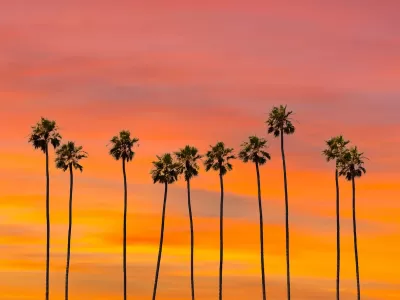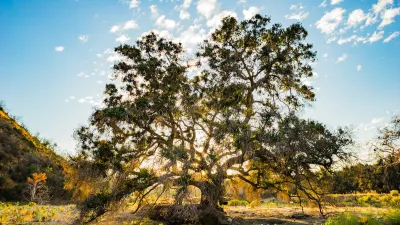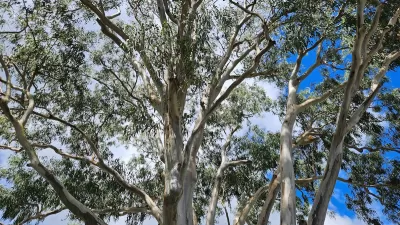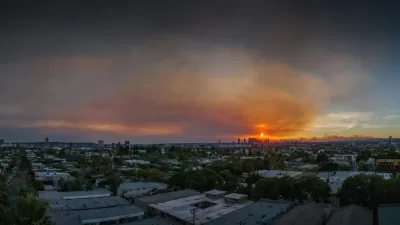L.A. must balance fire resilience with ecological preservation by gradually replacing flammable non-native plants like eucalyptus and palm trees with native and fire-resistant species while rethinking urban landscapes and land management practices.

Southern California's fire-prone environment raises questions about the role of flammable non-native plants, like eucalyptus and palm trees, in spreading wildfires. While these trees are iconic symbols of Los Angeles, they are also highly combustible and can exacerbate fire risks, especially when poorly maintained. Experts suggest a gradual transition toward native and less flammable species, such as coast live oaks and California lilacs, to create fire-resilient landscapes. However, even native plants are not entirely fireproof, as many naturally burn and regenerate, requiring careful planning to balance fire safety with ecological preservation.
This editorial emphasizes the importance of thoughtful vegetation management and land use planning to minimize fire hazards. Native plants, besides being less flammable in some cases, provide critical habitat for wildlife and promote biodiversity. Some desirable non-native species, like fruit trees, can also contribute to fire resilience in urban areas. Experts recommend planting non-native but fire-resistant species in urban cores and parks while avoiding invasive plants like fountain grass and mustard, which thrive in dry conditions and exacerbate fire spread.
As wildfires become more frequent and intense due to climate change, Los Angeles must adopt long-term strategies for sustainable rebuilding and land management. This involves creative urban planning, fire-hardened buildings, and vegetation management, supported by funding mechanisms for ongoing prevention efforts. The editorial calls for a collaborative and sustained approach to ensure that Los Angeles evolves into a safer, greener, and more resilient city, rather than simply replicating the conditions that contributed to its vulnerabilities.
FULL STORY: Editorial: After the fires, must we get rid of our flammable eucalyptus and palm trees? Maybe not

Trump Administration Could Effectively End Housing Voucher Program
Federal officials are eyeing major cuts to the Section 8 program that helps millions of low-income households pay rent.

Planetizen Federal Action Tracker
A weekly monitor of how Trump’s orders and actions are impacting planners and planning in America.

The 120 Year Old Tiny Home Villages That Sheltered San Francisco’s Earthquake Refugees
More than a century ago, San Francisco mobilized to house thousands of residents displaced by the 1906 earthquake. Could their strategy offer a model for the present?

HSR Reaches Key Settlement in Northern California City
The state’s high-speed rail authority reached an agreement with Millbrae, a key city on the train’s proposed route to San Francisco.

Washington State Legislature Passes Parking Reform Bill
A bill that would limit parking requirements for new developments is headed to the governor’s desk.

Missouri Law Would Ban Protections for Housing Voucher Users
A state law seeks to overturn source-of-income discrimination bans passed by several Missouri cities.
Urban Design for Planners 1: Software Tools
This six-course series explores essential urban design concepts using open source software and equips planners with the tools they need to participate fully in the urban design process.
Planning for Universal Design
Learn the tools for implementing Universal Design in planning regulations.
Ada County Highway District
Clanton & Associates, Inc.
Jessamine County Fiscal Court
Institute for Housing and Urban Development Studies (IHS)
City of Grandview
Harvard GSD Executive Education
Toledo-Lucas County Plan Commissions
Salt Lake City
NYU Wagner Graduate School of Public Service





























